MONTHLY LETTER
| 01 | 02 | 03 | 04 | 05 | 06 | 07 | 08 | 09 | 10 |
03
The TM JAPAN ART STUDIO:
The Makie Process Explained

Using Japanese paper, Takeshi Matsuyama draws or traces the pattern or design on the back of the paper using a “special” pen made from a tree known as, “gampi.” This is the thinnest form of the paper (known as “washi”). The key is the thin paper, and the top part of the pencil, which is made out of mouse hair. The pencil functions like a brush.
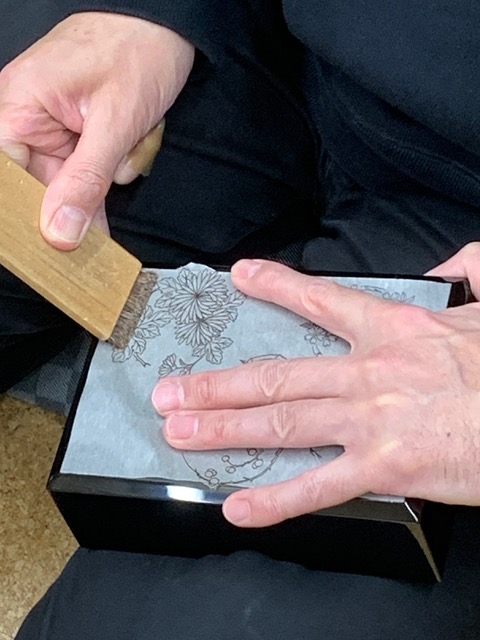
Using a second, thicker brush, the pattern is traced into the wood itself. In order to do this, Matsuyama must press down hard into the wood.
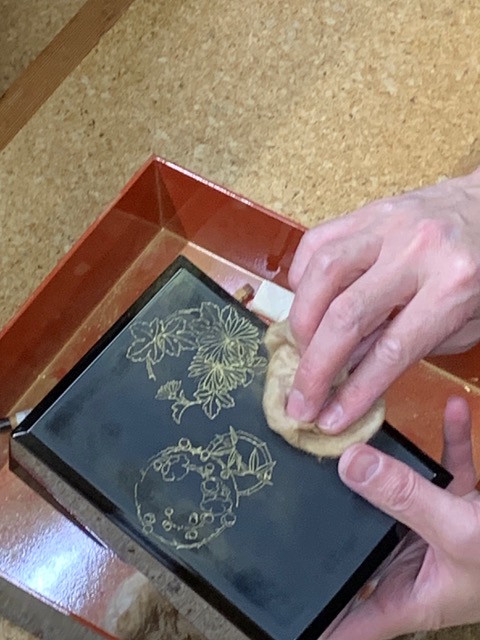
Matsuyama rubs gold powder into the pattern; he scrubs it very softly. In this way, the gold will adhere to the grooves of the wood.
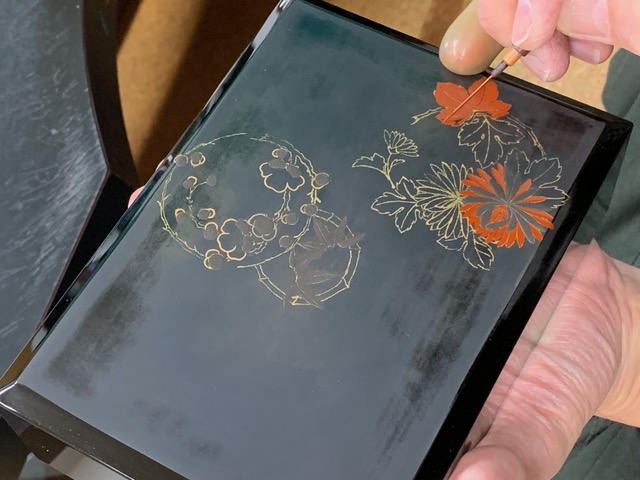
Here we see Matsuyama using the lacquerware. He is adding the colors. The pigments are used to deepen each color. In this way, the gold, seen as a contrast, appears even shinier.
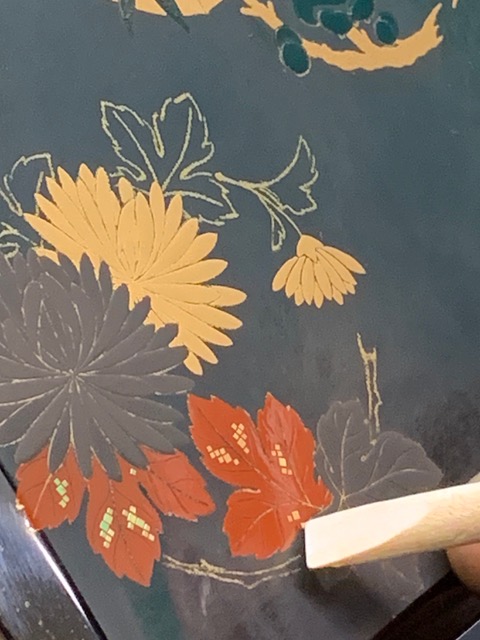
Matsuyama cuts the gold and here is seen holding a “chopstick” type of tool made from willow. He presses down on the gold plate and the gold goes into the grooves.
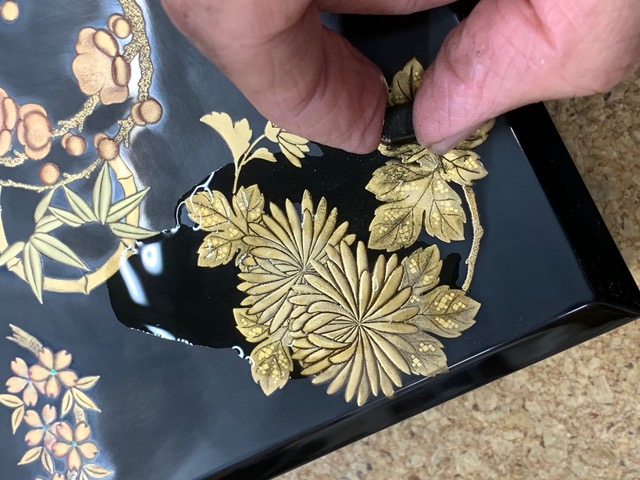
This is the polishing step. Matsuyama is holding charcoal and burnishing the gold.
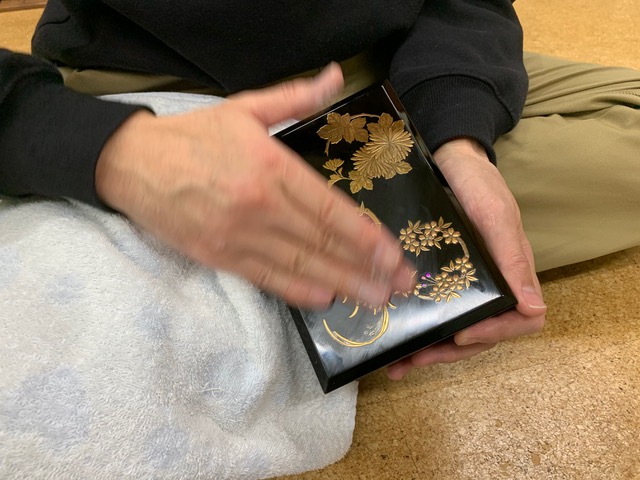
Matsuyama applies vegetable oil and titanium powder with his hands and fingers in order to gloss the design.
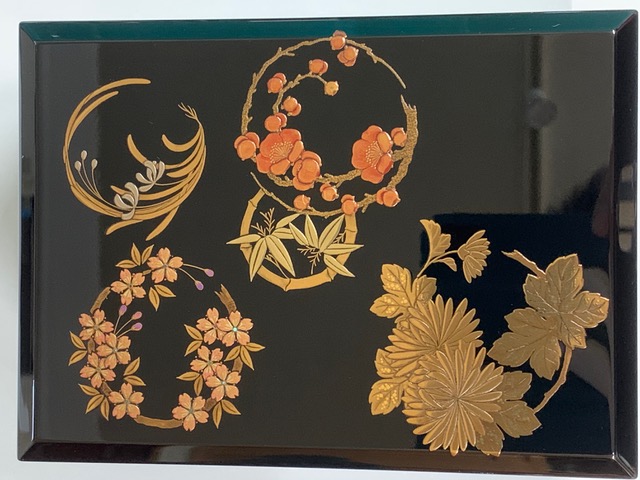
The finished work. Here we see the top of the incense box: plants and flowers. One of the key designs is the Hana-Maru pattern, which means the flower-circle. It is a classic Japanese pattern as it has no starting point and no end point, signifying: eternal happiness.